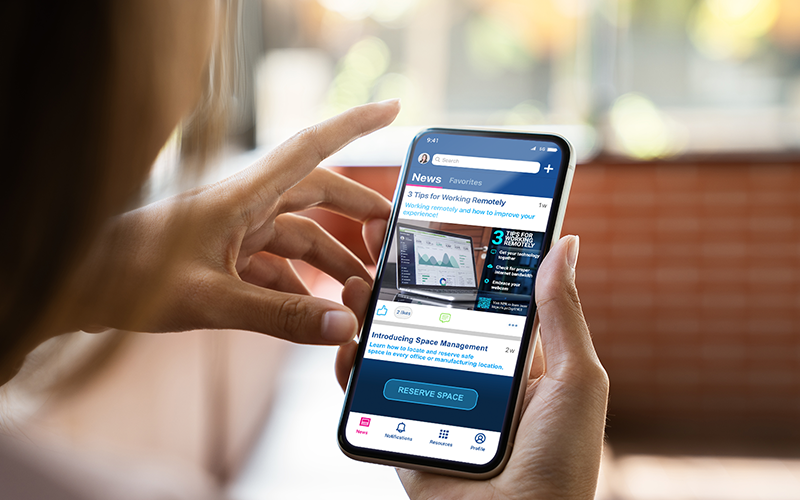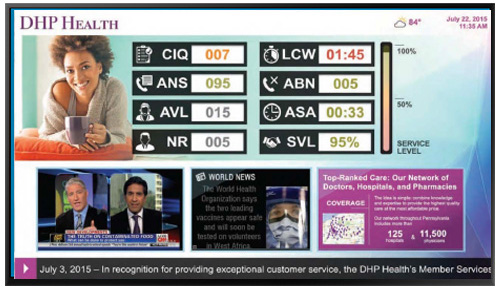The question isn’t so much, “What is the future of business?” It’s, “Where is the future of business?”
Read that again: not “what’s” — but “where.” Just as the classic real estate adage says, the real value is to be found in “location, location, location.”

Your mobile workforce might be in the field, on site with a customer — or may be a worker now remote with the changing conditions of our times. Any or all, they’re a modern workforce, unbound by a single physical location or office. In many ways they represent the future potential of your business. But only if they have the same opportunities as those in office: connection to the tools, apps, technologies, and resources that allow them to work from anywhere.
Does your organization see things the same as your employees may? 75% of mobile workers are of the opinion that the traditional office will be done with by 2030; 63% of their primarily in-office colleagues feel the same way. And in terms of new talent? 80% of candidates say they would turn down a job* — potentially with you — if flexible working conditions aren’t part of the deal. (This may also prove to be a factor in talent retention.)
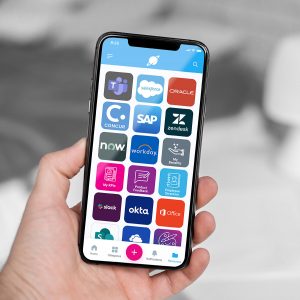
Committing to a mobile first workforce requires being aware that there are consequences of poor communication. You could find yourself having to deal with incomplete work or quality issues. Mobile employees can feel disconnected from your company, which can impact morale, productivity — and customer relationships.
Or you could find yourself in control of your future and its opportunities, with a smart mobile first communication strategy at the center of company success. This is where you support your mobile employees to be more collaborative and agile, able to access the data they need as they move from customer to customer — readily able to adapt and reap benefits no matter what the day or the location brings.
Gaining a Mobile First Advantage
The benefits to be gained from empowered mobile employees can be a significant motivator for keeping a mobile first communication strategy top of mind — and committing to the employee communications platform required to bring it forward. Here’s what (and where) you stand to profit:
- Improved customer experience: Remote and frontline employees can provide customers with immediate answers via their mobile device.
- Less employee stress: Remove commuting pressure, support a better balance between work and personal lives, fewer sick days.
- Real estate savings: Fewer in-office employees allow you to reconsider the need for expensive office space.
- Reduced travel costs: Connecting teams and customers through your employee mobile app or web browser saves on complicated, expensive logistics.
- Greater diversity: Draw talent from across geography and socioeconomic status to build a team that represents a wider range of cultures and backgrounds.
- Borderless productivity: Employees across time zones can share continuous workflows to support customers 24/7.
- Business continuity: If problems arise at the physical office, mobile employees can continue your business anywhere they are.
The plan and technology you put in place for mobile first workforce will enhance the entire workplace experience — even in office. Keep your entire organization aligned with in-office facilities and company culture with:
- Interactive directories: Make it easy to locate colleagues based on location;
- Wayfinding: Guide remote employees and visitors when they come into the office; and
- Conference room booking: Ensure the right equipment and space to support both on-premise and on-screen teams.
Strategies for a Mobile First Workforce
Now that you’re thinking about what you can get out of a mobile first communications — it’s time to focus on the drivers behind it. What are your intentions for your remote, field and hybrid employees? There are a few core principles you should consider:
- Consolidated resources: A modern workplace experience platform is key to bringing all your business resources together in a way that they can be consistently accessed, via an app or web browser and across devices.
- Clear policies: Establish expectations for day-to-day communication, as well as specifics, such as updates when arriving at or leaving a job site. How often do you expect to hear from mobile employees? How often should they expect to hear from you?
- Company-level communication: Corporate strategies and ideas need to find their way to remote employees on a regular basis, to help align on shared goals. Targeting can deliver this single message in formats and at times most relevant and impactful to teams and individuals, boosting morale and employee performance.
- 2-way communication: If communication is only a broadcast message, mobile employees will feel out of touch with their own contributions to the organization. Help these workers feel their concerns and insights are just as valuable as in-house staff: encourage sharing of feedback through your mobile app’s likes, shares and surveys — fostering engagement and connection.
- Team communication: The unique insights of your employees in the field are best practices that can be exchanged across teams to improve overall experience based on real world experience.

An interesting fact related to mobile is that counter to some expectations, age is not a limiting factor when it comes to employee engagement and performance. Mobile is more than the territory of your younger employee population, meaning there is more opportunity across age groups — making a mobile first communication strategy even more of a priority for business leaders.
The right workforce communication solution helps to close the communications gap with your dispersed teams and makes it easier than ever to stay in touch in meaningful and productive ways. That’s the ultimate goal of a mobile first communications strategy: to provide engaged employees with the tools they need to succeed.
You Need the Right Technology to Engage Employees

Many of your mobile employees won’t have access to corporate email, or a company-assigned computer for access to an internal intranet. Here’s where the right workforce communications platform brings your mobile first strategy to life: a device agnostic approach that can work as either an employee app on smartphones or tablets, or as an intranet through a web browser. Functioning as both a communication device and a virtual desktop, making relevant content always available, access to resources a snap, and brings forward important notifications at the right time to make sure employees are best informed, empowered and engaged.
A sophisticated mobile first communications approach means employees, that are onsite or off, can perform almost any task, regardless of location. Now they have real time access to schedule changes, the ability to make updates to customer history, and access to centralized documents and business information, that allows your agents to create a seamless experience and solve challenges helping your business grow.
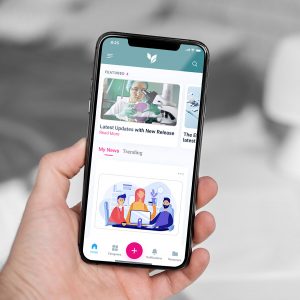
Adopting a visually friendly and interactive approach of modern-day interface design means the employee app experience can incorporate content feeds, categories of interest, social media shares — an interactive experience that makes training and buy-in easy.
The latest news can be communicated as it happens, with targeted alerts and push notifications helping to break through the noise of the day and influence behaviors. An embedded workforce directory connects employees who can’t meet face-to-face, improving the overall community of the company and helping to reduce isolation in remote workers. Full media support provides direct supervisors with many options — text, animation, video, infographic, audio — to share messages in the format that will be most relevant for each employee.
Creative employee engagement initiatives enable activation and interaction for your entire workforce across the organization. Your employee experience technology is an engine for better business outcomes and improved employee experience: more engaged, more loyal to your company, more capable of increased productivity.
Make Mine a Workplace Experience to Go
Where’s the future of business? It’s in teams stationed anywhere that can share working practices and support, through improved internal communication and increased collaboration.
It’s in moving critical information out from behind firewalls (or even printed material!) and putting it on the screens of the highly engaged employees seeking to expedite on the spot decisions and resolutions, boosting client satisfaction.
It’s in a field worker who can use a form in her mobile app to upload images and a report in real time, so her manager can prioritize next steps and allocate resources.
It’s in collecting data on customer interactions, preferences, travel time, appointment length, and behaviors — and then using that data to give deskless workers access to key client insights via a real time employee communications tool, to ensure a more personalized, prepared service for customers.
It’s in combining the need-to-know info (benefits and payroll) with the nice-to -know (employee news or company wins) so employees are excited to log in, are informed when they do, and are encouraged to keep coming back for more.
And The Employee Engagement Surveys Say…
Employee engagement survey results tell an interesting story. Workers who consider their organizations mobile tech pioneers score themselves 21% higher for company loyalty, and 23% higher on job satisfaction. 45% agree that mobile technology helps improve their creativity. By empowering their “untethered workforce” with the right mobile first communications, businesses are seeing a 53% increase in employee engagement — and a 67% increase in productivity**.
“Mobile” is not a trend or buzzword. It’s the way business works, and a competitive advantage that you’ll want to make a strategic imperative. With a mobile first communications strategy, anywhere your employees work can be a modern, productive workplace experience.
* Price Waterhouse Cooper July 2021
** McKinsey & Company

